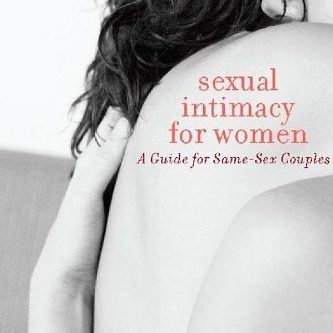
Do Lesbians Hate Sex as Much as Straight Women Do?
They say all politics is local. What could be more “local” than our bodies?
What could be more political than our lesbian desire for each other?
I wrote about “The Little Pink Pill” and some women got upset. One woman told me that it was insidious, what Sprout Pharmaceuticals did to get the FDA to approve Flibanserin despite side effects, ignoring that pills for male erectile dysfunction have similar side effects.
Another said the whole concept of a “female Viagra” was “male-driven.” Yet another woman told me that it was perfectly fine if women gave up sex, it was a male thing, anyway and women should be allowed to not have sex.
I was surprised by these responses. My article hadn’t advocated for the drug, but it did advocate for discussion of female sexual dysfunction and low libido which has not been manufactured along with the drug.
The arguments against The Little Pink Pill I heard debated were whether any woman actually wanted the pill at all or if women were just being pressured into sex they didn’t want by male partners and a male-driven pharmaceutical industry.
I won’t debate that there are problems with Big Pharma pushing medications on us; those are manifold. But I disagree with the argument that Flibanserin was addressing a problem that didn’t exist.
I have done many interviews with women about sexuality and many have wondered where their sex drive went. These women miss both the pleasure and intimacy of sex. This isn’t a manufactured problem, but one many women struggle with.
The entirety of the discourse around Flibanserin felt very 19th century to me. I felt like the outlier–writing about how great it was that The Little Pink Pill was opening the door to discourse on women’s sexual desire and hoping there would be more of it while all these other women were writing no, no, no.
Was something wrong with me for promoting the concept of female sexual desire? I like sex and think it’s an important part of women’s lives. And I know I am not the only one.
Yet if the other articles I was reading by women are to be believed, many women don’t like sex and instead view sex as at best an imposition, at worst, coercive.
I have a lot of straight women friends. The majority of them, even the married ones, don’t have much sex. Men are, many straight women say, awful. Just yesterday I read an article by a woman in her early 30s about date rape.
The author described her own date rape, her inability to even call her experience rape for several years and then the refusal of her friends–the man was in her set–to do anything but shrug it off and tell her to move on. The alleged rapist was still invited to the same parties, still being set up on dates with other women by the same woman who had set the author up with this man.
You don’t hear similar stories from lesbians–of women being forced into sex and being unable to recover from the experience for years. You don’t read about lesbians who plough through groups of friends forcing themselves on each woman they meet.
Which made me think this was perhaps the difference between straight women and lesbians: For lesbians, there is no looming threat of violence, no fear that the funniest person you’ve gone on a date with will take you home only to physically overpower you and violate you against your will.
Maybe.
In his book “What Do Women Want? Adventures in the Science of Female Desire,” journalist Daniel Bergner argues this very point, using the work of researchers surveying thousands of women. Women are, it seems, at least as interested in sex as men, and likely much more interested. Women also show an interest in more variety of sexual expressions.
For decades, if not centuries, women have been told they have diminished sexual drive compared with men, that they manipulate sex to achieve monogamy, that they walk away from sex as soon as they are coupled. And while some anecdotal evidence shows some women do settle into a less sexually passionate mode once they are monogamous, the vastness of Bergner’s research proves otherwise.
The rules of the sexual game have long been written by men. Feminist writer Margaret Atwood’s famous remark that “men are afraid that women will laugh at them; women are afraid that men will kill them” has long defined the schism between men and women when it comes to who gets to define sex and desire and the concept of consent.
But what about lesbians? We don’t have to think about wounding men’s fragile egos or being raped by our male dates. We don’t even have to think about the whole spectre of “lesbian bed death” that continues to haunt us, whether or not it’s actually real.
As a lesbian, I can’t speak to heterosexual desire and the complications of a power imbalance you don’t choose. I just know that many of the lesbians I know aren’t having sex, either.
Why not?
Women rarely talk about desire and lesbians talk about it less than straight women, perhaps because straight women talk about it in opposition to male desire and lesbians don’t. Lesbians talk about sex we like or don’t like, but we almost never talk about the sexual desire that defines us as lesbians.
Lesbian desire. The desire for our own female bodies. Desire to bury our faces between another woman’s legs, desire to kiss her all over, desire to touch and be touched. Desire to actually say these things out loud.
As Bergner explains in his book, for millennia women have not been allowed to talk about their sexual desire. To acknowledge such desire was to accede to slutiness, to whoredom.
To even acknowledge that female sexual desire existed was taboo. In my own adult life in post-legalized-birth-control, post-Sexual-Revolution and post-Stonewall society, women have had more agency to have sex, yet still aren’t talking about female sexual desire.
Female desire. Irrespective of male desire. Ask a woman if she masturbates and see how many different colours she turns. Yet we should be teaching masturbation in schools because the best way to learn about our bodies is to explore them ourselves.
We should all be masturbating. We should all be having sex.
Bergner argues that gender roles have damaged sex for women (and for men) and that women are, as a consequence, still held hostage sexually by the dominant social force of male desire.
This may explain the outrage over Flibanserin and the need to reject the idea that women want sex as much as men. But what about the lesbians?
My straight feminist women friends talk about sex as if it is always something imposed on them by their male partners. Just a few days ago some women I know were discussing how quickly men demand sex after childbirth.
I admit I was shocked. Both that men who were loving partners choosing to start a family with a woman would make such demands and that the women would acquiesce when they were not yet healed and in such a fragile emotional state post-childbirth.
I felt grateful–and not for the first time–to be a lesbian.
When I see those commercials on TV for KY lubricants–there are at least a dozen different kinds now all being marketed solely to straight couples, just like the pink and blue pills–they consistently address the issues that plague heterosexual couples: She doesn’t get aroused very quickly, they don’t have much time for sex, they don’t have sex very often.
Statistically, most middle-aged adults–that’s the mid-30s through 50s–don’t have sex very often. The reasons are unsurprising: Work, kids, exhaustion. After a 16 or 18 hour day, which is what most Americans are living, we just want to take a shower and go to sleep.
But what about desire?
Does desire fade over time and familiarity, or is it always there and we just need to discuss it more and make ourselves comfortable with that discourse?
Studies of lesbian sexuality indicate lesbians in monogamous relationships are having good sex. Better sex, it seems, than heterosexual women in monogamous relationships. Sex lasts longer between women, women report more orgasms and there is more concomitant intimacy.
A recent survey of nearly 9,000 lesbians by Autostraddle magazine reported that “monogamous lesbians are having sex as much (if not more than) their straight counterparts.”
And while the study notes “it’s not always easy to compare this data, because places like the Kinsey Institute still focus only on penetrative sex, and when you pair that with the fact that fewer lesbians formalize their relationships through marriage, a one-to-one equivalence is elusive,” the study also stipulates that despite these differentials, “data shows that 35.6 per cent of monogamous lesbian couples are having sex ‘multiple times per week,’ while 35.2 per cent of married, straight couples are having sex at similar rates.”
Autostraddle explains, “Contradicting the notion that marriage is the death knell of regular sex, married straight people are having more sex than their unmarried but monogamous counterparts, amongst whom only 28.7 per cent are having sex multiple times per week.”
The annual WomenTALK survey commissioned by HealthyWomen, a nonprofit organization that provides health information for women revealed other details about women and sex. The survey found that just over half of women–51%–think having sex several times a week is healthy.
But that same survey replicated the Autostraddle survey, revealing that only 30% of women have sex more than once a week. A full 66% acknowledged having sex less than once a week.
According to other studies of lesbian sexuality, regardless of how much sex lesbian couples have, they are finding it more fulfilling than the sex straight or bisexual women are having, with more reported orgasms, more intimacy, more playfulness and longer periods of time spent having sex..
All of which makes lesbian sex sound like the sex every woman would want to have.
I question the “multiple times per week” for all couples. My experience interviewing women on this issue indicates that women feel embarrassed about not having as much sex as they think they should be having for their age or for the amount of time they have been with a partner.
If they are single, they think they should be having more sex than married couples. So those “multiple times” may be an exaggeration among those reporting it.
But even if these numbers are correct and about 30% of all women, straight, bisexual and lesbian are having sex several times a week, these surveys still argue that the majority of women–two-thirds and more–single or married, lesbian or straight, are not having much sex at all.
That may be where desire factors in.
The biggest impediment to more regular sex, according to the annual WomenTALK survey’s respondents, was tiredness from daily life. Women also reported discomfort with their body image. But women also reported dissatisfaction with the communication with their partners.
So maybe we should be discussing desire more. Not just what we want in bed, but what we need to feel intimate enough with our partners to get into bed with them.
No one knows how often we should be having sex. Women do indeed have more sex when we are younger when we also have higher sex drives due to our estrogen production.
We also have fewer responsibilities. And most women I have interviewed say that sex ebbs and flows in a relationship–there will be a lot of sex some months and nearly none in others. (No one ever seems to have sex around the holidays, for example, probably due to familial stresses.)
For women having sex with men, the issues stymying a more full sex life seem to be different from those for women having sex with other women. One impediment for lesbians can be the homophobia they face in their daily lives. Some lesbians reported to me that sometimes they just want intimacy without sex because their experiences out in the world have been so emotionally depleting. They want to be soothed and held and stroked, but not necessarily in a sexual way.
So how do we bring lesbian desire out in the open? How do we stop reporting that women don’t really want sex and start reporting that women desire sex at least as much as men, but they desire it on their own terms, with enthusiastic consent?
In the Venn Diagram of sex, lesbians should only ever have enthusiastic consent as their interface. Lesbian A can like some things and Lesbian B can like others and where they meet is in what they both agree on. And if you can’t find a place for enthusiastic consent, then maybe you are really close friends and not lovers. (The same should apply to straight and bisexual women, but it’s up to them to find their own diagrams and their own consent.)
In 2015 we finally recognize that women desire sex just as much as men. But we have yet to recognize that we should be able to have as much sex as men. Instead of dismissing our female sexual desire and tossing out The Little Pink Pill as just another way for men to enveigle women into bed, let’s embrace our desire for sex and find more and better ways to have it, replete with the intimacy that makes sex good.
The first step is embracing our own desire. The next is refuting that our female desire has anything to do with men. Sex is one of our prime drives as human beings. It’s time we opened ourselves to its joys and satisfactions and released ourselves from the gendered depictions of our female desire that have kept us from exploring our bodies and ourselves.





